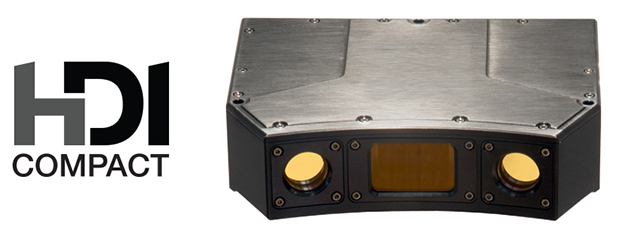Editor’s Pick: HDI Compact 3D Scanners Unveiled

Polyga’s dual-camera HDI Compact 3D scanner series for industrial applications uses blue LED structured-light technology for rapid scanning. Series members include units with 1.3-, 2.8- or 5.2-megapixel monochrome cameras for different scanning volumes. Image courtesy of Polyga Inc.
Latest News
February 28, 2018
 Dear DE Reader:
Dear DE Reader:
Recently, Polyga rolled out its new generation of compact 3D scanners for industrial applications. They sound pretty neat, so let's get cracking.
Officially called the HDI Compact 3D Scanner Series, this trio of lightweight units feature dual 1.3-, 2.8- or 5.2-megapixel monochrome cameras. All units use blue LED structured-light scanning technology, coupled with proprietary post-processing software called FlexScan3D. All are plug-and-play—load the software, connect and start scanning.
 Polyga's dual-camera HDI Compact 3D scanner series for industrial applications uses blue LED structured-light technology for rapid scanning. Series members include units with 1.3-, 2.8- or 5.2-megapixel monochrome cameras for different scanning volumes. Image courtesy of Polyga Inc.
Polyga's dual-camera HDI Compact 3D scanner series for industrial applications uses blue LED structured-light technology for rapid scanning. Series members include units with 1.3-, 2.8- or 5.2-megapixel monochrome cameras for different scanning volumes. Image courtesy of Polyga Inc.It's a fascinating process. There's a video linked at the end of today's write-up showing it in action with an older Polyga scanner model. Watch it. But basically, the units flash light patterns on your target object. The target's surface distorts the light patterns, and the cameras capture the event.
The captured data goes to the supplied FlexScan3D software, which handles the data processing from alignment and cleanup on up to stitching multiple scans together into a complete digital 3D model. You can then export the results in a choice of common formats for jobs like reverse engineering and inspection. (FlexScan3D has a lot more going for it, so hit the link to its landing page in today's write-up.) Depending on the object, you can use an optional rotary table to turn your target automatically.
It appears to be a fast and accurate process. Specs include scan speed ranges from 250 to 333 ms. Average resolution ranges from 985,000 to 5 million points per scan. Accuracy is reported to range from up to 12 microns to 35 microns.
The industrial aspect of the HDI Compact 3D scanners expresses itself in two key ways. First, they're housed in a solid aluminum body, and they're IP67 rated for dust proofing and water resistance.
Second is their lightweight and small size. The heaviest tips the scales at 3.35 lbs. (1.52 kg), and it tape measures 1.9x5.35x6.69-in. (49x136x170 mm). What these characteristics also mean for you is that you can deploy an HDI Compact scanner on your desktop, embed it in tight quarters or mount it on an articulated arm.
All in all, the HDI Compact 3D Scanner Series sounds solid. Today's Editor's Pick of the Week write-up breaks down the specs of the three models and has other details as well as links to explore. Check out the series' dedicated landing page for more operational data and where they may best be deployed.
Thanks, Pal. – Lockwood
Anthony J. Lockwood
Editor at Large, DE
Subscribe to our FREE magazine, FREE email newsletters or both!
Latest News
About the Author
Anthony J. Lockwood is Digital Engineering’s founding editor. He is now retired. Contact him via [email protected].
Follow DE





